Are you on a team where two people are both high performers, yet they don’t get along? Maybe you’re trying to work with a vice president and, for some reason, your team leader doesn’t get along with that individual. I’m going to offer some insights today on how to address this situation.
Hi, I’m Peter Nichol, Data Science CIO.
One of the challenges that leaders face is placing resources for the best organizational fit. A lot of the time, success is more dependent on people getting along and working well together than the actual skills and competencies required in the domain. For example, two people might be skilled and competent, yet nothing seems to click between them. This situation results in little output and a large degree of friction. I want to offer a different perspective on how to solve this challenge.
In the 1960s, Carl Jung came up with a series of personality assessments. He was trying to uncover the variance among different types of personalities and how these affected people’s interactions. The Merrill-Reid method that was developed later expanded on this research.
Fast forward to 2009. Robert and Dorothy Bolton developed a similar idea as the basis of their book titled, People Styles at Work. The book helps readers identify how people get along and how they think and communicate.
This book focuses on the four primary personality styles. The first personality type is the “Driver,” which is characterized by directness. This personality type is straightforward and is only interested in what they’re required to know and nothing else. The second personality style is called “Analytical.” This type is only interested in getting work done their way or “the right way” and often prefers to work independently. The third personality type is “Amiable.” This personality type wants to get the work done eventually, but they have a desire to include everyone during discussions. The last personality type is “Expressive.” This type is more outgoing and wants to get the work done while being inclusive (usually involving resources outside the core process). You have all these types blended into your teams today.
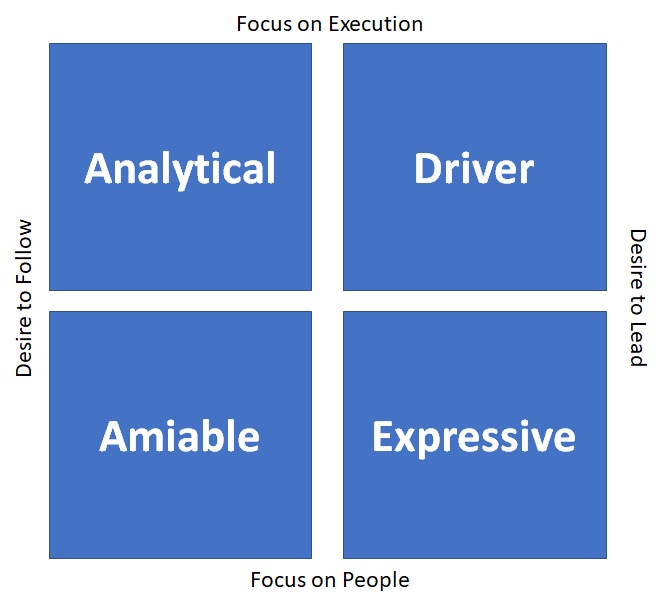
Let’s quickly review each style:
Driver
- Focused on getting work done.
- Sets high yet realistic objectives and accomplishes them.
- Able to pivot positions when better information surfaces.
Analytical
- Most perfectionistic of the styles.
- High achieving and high time-consuming work engagement.
- Systematic and well-organized.
Amiable
- Less assertiveness with better-than-average responsiveness.
- Often a team player.
- Performs best with defined structure and stable environments.
Expressive
- High emotional expression and very outgoing.
- Focused on ideal thinking and rarely confined by pragmatic constraints.
- Tendency to act first and think later.
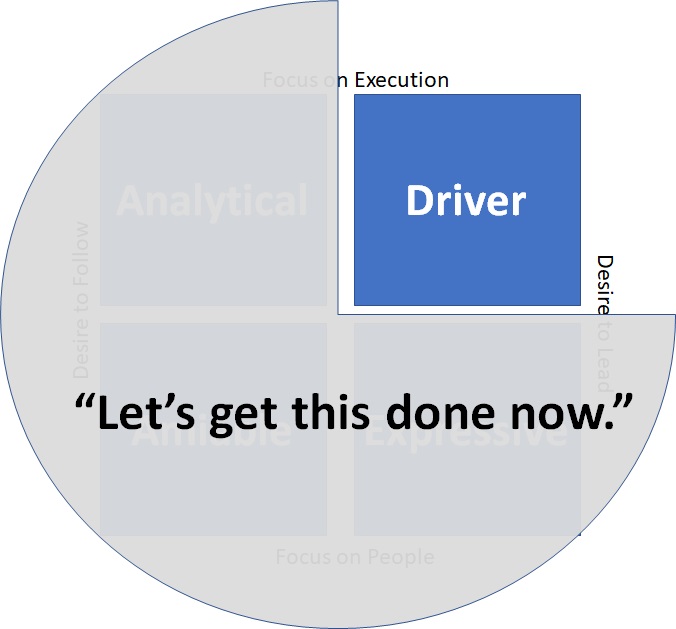
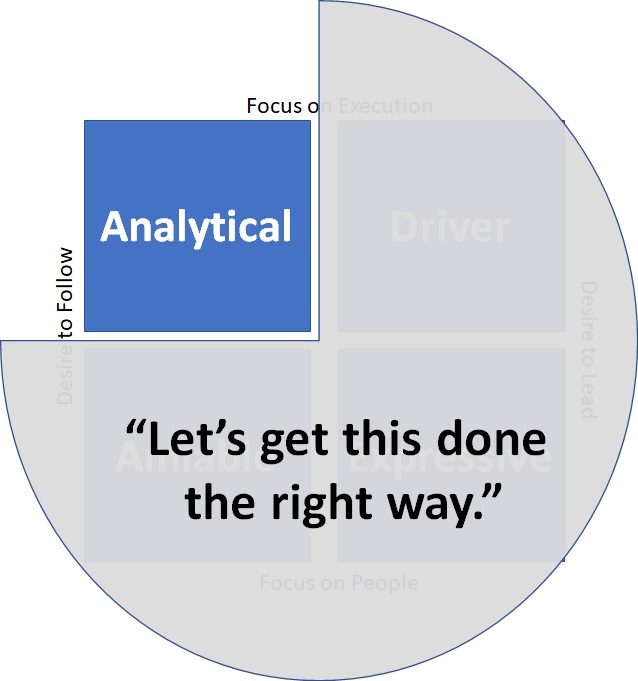
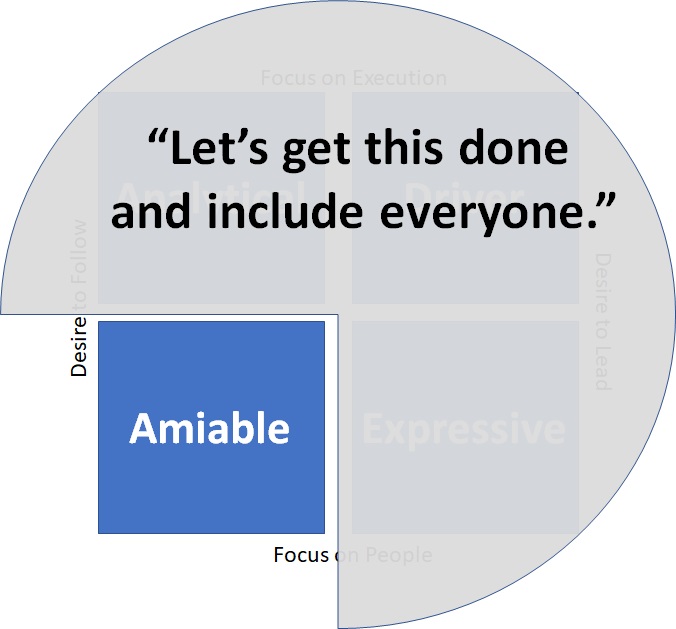
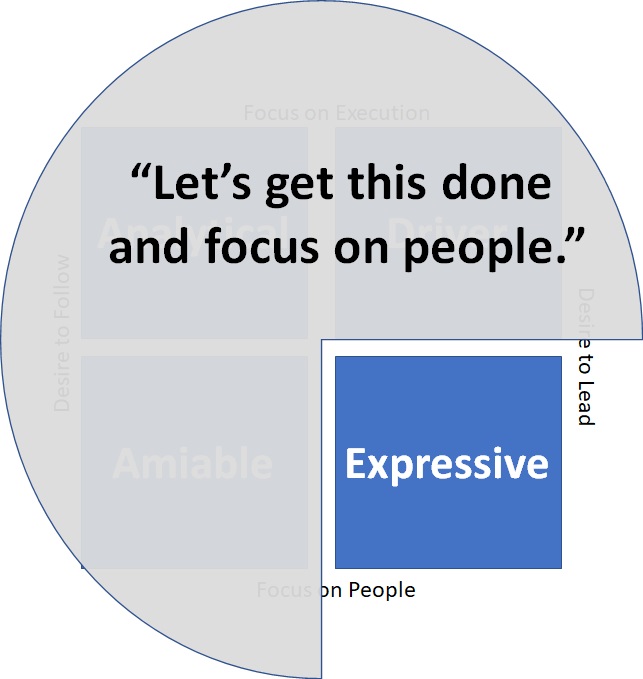
When you start to explore the people-styles model and the four different quadrants, it’s exciting to see how people get along and why they don’t. An individual who’s a Direct type of communicator isn’t necessarily going to get along with somebody who’s an Amiable. Of course, this doesn’t mean people can’t flex in and out of personality types. However, it does suggest that their natural state of communication may result in conflict and, eventually, that will create problems. Similarly, a resource whose style is Analytical isn’t going to get along with an Expressive leader. One leader will want to analyze the data by themselves, and the other leader wants to have multiple discussions as they think through the data (before they read or review it, most likely).
Flexing your style
On average, 75% of the population has a different style than you, according to People Styles at Work. They think differently. They decide differently. They communicate differently. Flexing your people style involves adjusting your behavior to be more in line with another person’s style. Think of this as a temporary modification of your behavior to help improve your team interactions. Here’s how it’s done in practice.
- Identify: Be mindful of your style. Take note of the other person’s style.
- Plan: Determine how you’ll adjust your style for the best results.
- Engage: Interact with the person, and monitor whether your style modifications have the desired effect.
- Evaluate: Assess whether the conversation was more productive than usual.
Example: Flexing to a Driver
Here are tips when you’re conversing with a Driver:
- Speak more rapidly.
- Be prepared to decide quickly.
- Be on time.
- Limit gestures.
- Stick with results-driven objectives.
- Tell more; ask less.
- Use accurate, fact-based evidence.
- Focus on the high-priority items.
Example: Flexing to an Analytical
Here are tips when you’re conversing with an Analytical:
- Get to business.
- Limit small talk.
- Decrease eye contact.
- Avoid touching.
- Develop detailed step-by-step plans.
- Stick to the plan.
- Be overprepared.
- Go into considerable detail.
- Provide written support materials and follow up in writing.
- Talk less.
Building the foundation for success
Do you have team conflicts? Are leaders not getting along that should be getting along great? Start to assess if you’re matching up the right personality types for the executives you’re supporting. Focus on where they’re strong:
Whether you’re focused on business relationship management, agile delivery, or delivering projects, it’s important to make deliberate decisions and align personality types to stakeholders.
Now, it’s great to have a diverse group of people, and I’m a big fan of diversity of ideas. However, when it comes to aligning individuals for optimal productivity, you need to align similar personality types.
A leader who enjoys working independently and is paired with a leader who loves to collaborate and involve lots of people will be frustrated in that environment and ultimately not perform optimally.
Consider how your team is structured. Which leaders are supporting which stakeholders? Have you deliberately linked critical internal resources to executives based on personality types?
Interested in performing the People Styles exercise with your team? Here are the essentials you need to make that happen. Download these files to start the exercise and better understand how your team naturally interacts and behaves.
- People Styles Worksheet: the questions necessary to determine your style
- The Four People Styles Performance Grid: better understanding your style
- The Four People Styles Descriptions: building awareness of style tendencies
Evaluate the people styles on your team and the stakeholder alignment that’s in place today. It might make sense to implement early adjustments for a more productive year.
Hi, I’m Peter Nichol, Data Science CIO. Have a great week!
